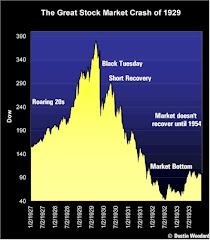 |
| US numbers but identical trend to Canada |
The Harper government made a surprising offer to negotiate wages with its major unions before contracts expire to help manage “financial predictability” in preparing the next budget.
The extraordinary offer was made to the two giants, Public Service Alliance of Canada and the Professional Institute of the Public Service of Canada, with the caveat that negotiations start immediately and settlements must be reached within weeks. Seventeen unions represent federal public servants.
The move has sparked much speculation about what’s behind these early, exploratory talks. Some say the government wants “labour peace” and the thorny issue of wages resolved before an election.
Public Servants have become masters
A quick examination of the facts shows that spending on compensation for federal employees is out of control in Canada. No different than communities elsewhere in North America where
Public servants are now its master
These days, government employees are better off in almost every area: pay, benefits, time off and security, on top of working fewer hours. Public workers have become a privileged class – an elite who live better than their private-sector counterparts. Public servants have become the public’s masters.
More troubling still is the inherent political corruption. Elected officials tend to be accommodating when confronted by powerful constituencies such as the public service unions that agitate for plush benefits and often provide (or deny) a steady flow of cash to election campaign funds. Their successors will have to cope with the inherited debt burden – and ultimately the nation’s taxpayers are stuck with the bill.
When I was in Los Angeles there was a full page front section advertisement from the Cato Institute. The title of the ad was
President Obama we are still waiting! The ad listed several areas that needed to be addressed. One of the key ones was the disparity between the compensation of taxpayers and those of what Scwarzenegger calls the Protected Classes.
The Cato Institute highlights the costs to taxpayers of the huge compensation paid to government employees. Of course a big part of this compensation comes from the benefits package. Gold-plated pension and health benefits not available to the average Canadian worker. These benefits are estimated to be an additional 35% of compensation costs.
Cato Institute -
Federal Pay Continues Rapid Ascent
Canada's Numbers
Canadian politicians are in denial about the problems that exist here.
In Canada the common thinking is that they are relying on a significant downsizing of the federal public service as baby boomers retire to cut back their costs overall. This however, is not happening. Employment is rising the the public sector and costs are increasing at the rate of 5% per year.
The official story is that annual increases are only 2 or 3 percent each year. However, what is not taken into account is the annual grading or step increases that are not included in the annual wage disclosures.
Statscan released government compensation numbers. They show that last year in 2009 the core federal public service had 415,397 employees earning $29.3 Billion. This is up from 351,000 and $17.9 Billion in the year 2003.
This year the average federal employee earns a little over $70,000 with additional benefits worth by the government's estimate $24,500. The total compensation per employee is edging in on $100,000. So it is very dangerous to suggest the problem will be solved by attrition. Employment has increased almost 18% from 2003 to 2009 and annual compensation increases have been 5%.
Statscan - Public sector employment, wages and salaries 2009
Treasury Board - Expenditure Review of Federal Public Sector
Private/Public Comparison
When we look at the wage comparison between the public and private sectors we see the gap is widening every year.
The gap between the average private sector worker and a federal government worker is now 60%. That is the government worker makes more than 60% more than the average Canadian. This does not include the 35% benefits and pension package the government worker gets. This would increase the gap dramatically.
More worrying is the increase of the average government worker's pay package. It is has increased at the rate of 5% for the past 4 years while the private sector wage increase has been about half or 2.5% per year.
This information comes from
Statscan - Employment and average weekly earnings
The numbers also confirm the average wage levels of $ 68,848 for a federal worker and $42,796 for a private sector employee.
Milt Zuckerman has pointed out the risks to taxpayers. Canadian or American we are all in the same situation.
A fundamental rethinking of the public workforce is necessary. Americans cannot maintain their essential faith in government if there are two Americas, in which the private sector subsidies the disproportionate benefits of this new public sector elite.
Bill Tufts
Fair Pensions For All





No comments:
Post a Comment